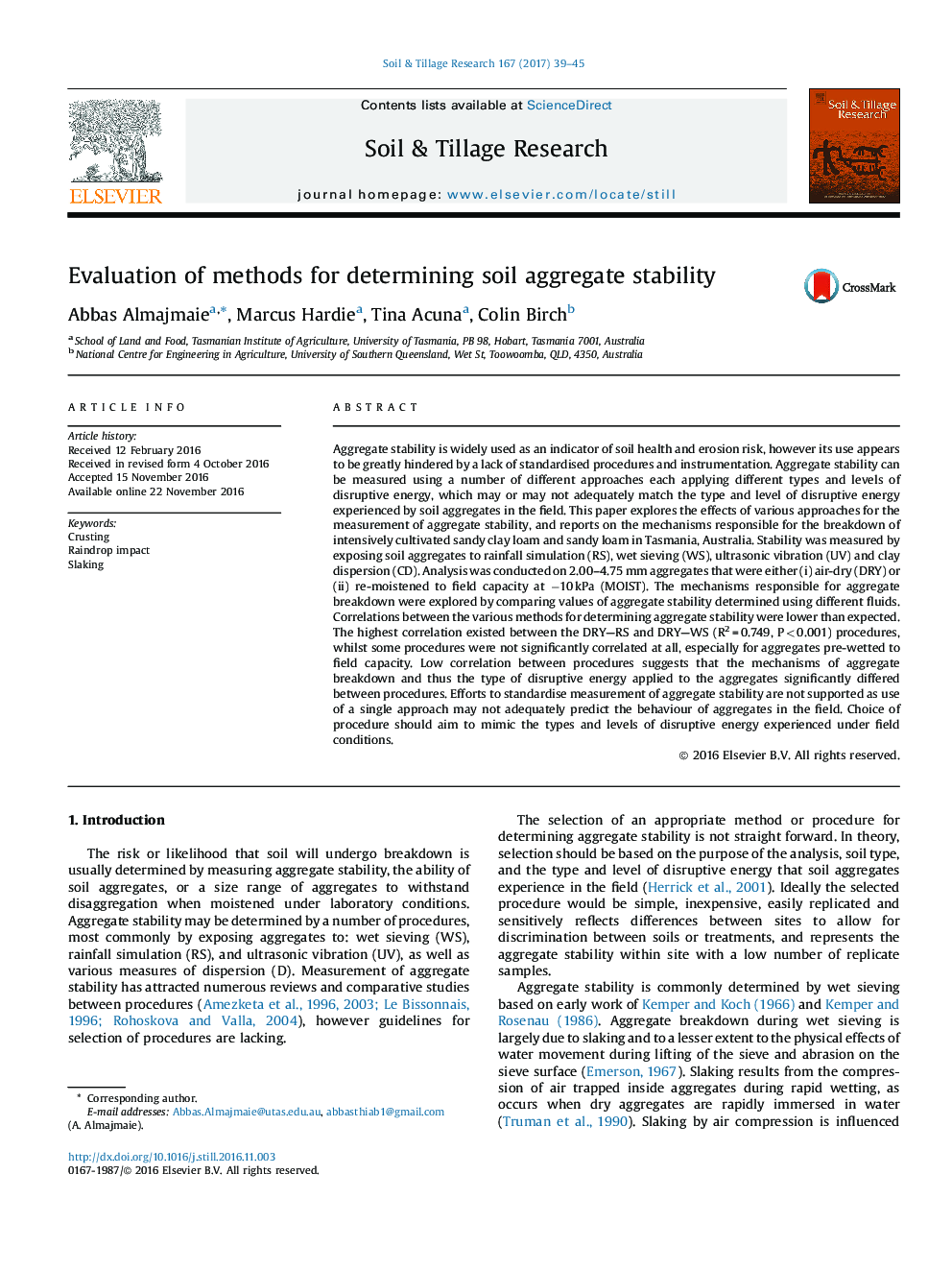| Article ID | Journal | Published Year | Pages | File Type |
|---|---|---|---|---|
| 4927592 | Soil and Tillage Research | 2017 | 7 Pages |
â¢Different methods for measuring aggregate stability are poorly correlated.â¢Disaggregation resulted from raindrop impact and slaking by differential swelling.â¢Standardisation of methodology appears unwarranted.â¢Choice of methodology should mimic breakdown of field aggregates.
Aggregate stability is widely used as an indicator of soil health and erosion risk, however its use appears to be greatly hindered by a lack of standardised procedures and instrumentation. Aggregate stability can be measured using a number of different approaches each applying different types and levels of disruptive energy, which may or may not adequately match the type and level of disruptive energy experienced by soil aggregates in the field. This paper explores the effects of various approaches for the measurement of aggregate stability, and reports on the mechanisms responsible for the breakdown of intensively cultivated sandy clay loam and sandy loam in Tasmania, Australia. Stability was measured by exposing soil aggregates to rainfall simulation (RS), wet sieving (WS), ultrasonic vibration (UV) and clay dispersion (CD). Analysis was conducted on 2.00-4.75Â mm aggregates that were either (i) air-dry (DRY) or (ii) re-moistened to field capacity at â10Â kPa (MOIST). The mechanisms responsible for aggregate breakdown were explored by comparing values of aggregate stability determined using different fluids. Correlations between the various methods for determining aggregate stability were lower than expected. The highest correlation existed between the DRY-RS and DRY-WS (R2Â =Â 0.749, PÂ <Â 0.001) procedures, whilst some procedures were not significantly correlated at all, especially for aggregates pre-wetted to field capacity. Low correlation between procedures suggests that the mechanisms of aggregate breakdown and thus the type of disruptive energy applied to the aggregates significantly differed between procedures. Efforts to standardise measurement of aggregate stability are not supported as use of a single approach may not adequately predict the behaviour of aggregates in the field. Choice of procedure should aim to mimic the types and levels of disruptive energy experienced under field conditions.
